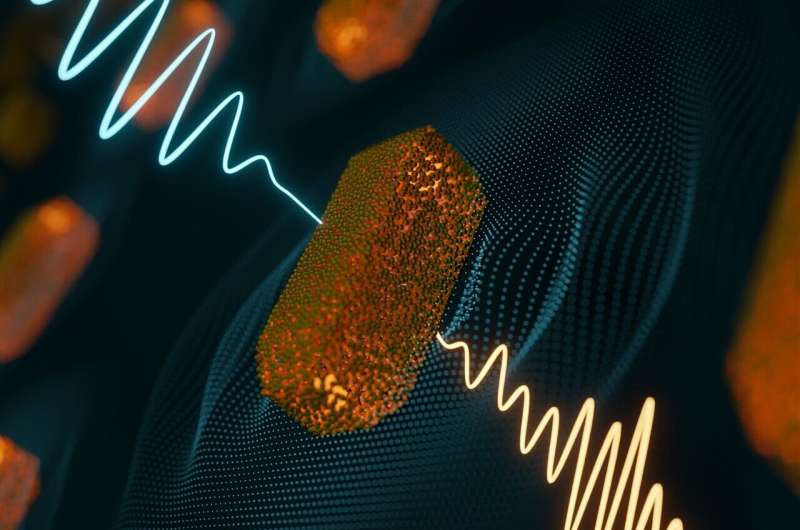
An international research team led by Universität Hamburg, DESY, and Stanford University has developed a new approach to characterize the electric field of arbitrary plasmonic samples, like, for example, gold nanoparticles. Plasmonic materials are of particular interest due to their extraordinary efficiency at absorbing light, which is crucial for renewable energy and other technologies.
In the journal Nano Letters, the researchers report on their study, which will advance the fields of nanoplasmonics and nanophotonics with their promising technology platforms.
Localized surface plasmons are a unique excitation of electrons in nanoscale metals such as gold or silver where the mobile electrons within the metal oscillate collectively with the light-electric field. This condenses optical energy, which in turn enables applications in photonics and energy conversion, for example in photocatalysis.
To advance such applications, it is important to understand the details of the plasmon drive and damping. However, one problem for the development of related experiments is that the processes take place on extremely short time scales (within few femtoseconds).
The attosecond community, including lead authors Matthias Kling and Francesca Calegari, have developed tools to measure the oscillating electric field of ultrashort laser pulses. In one of these field sampling methods, an intense laser pulse is focused in air between two electrodes, generating a measurable current. The intense pulse is then overlayed with a weak signal pulse to be characterized.
The signal pulse modulates the ionization rate and consequently the generated current. Screening the delay between the two pulses provides a time-dependent signal proportional to the electric field of the signal pulse.
“We employed this configuration for the first time to characterize the signal field emerging from a resonantly excited plasmonic sample,” says Francesca Calegari, lead scientist at DESY, physics Professor at Universität Hamburg and a spokesperson of the Cluster of Excellence “CUI: Advanced Imaging of Matter.”
The difference of the reconstructed pulse with plasmon interaction to the reference pulse allowed the scientists to trace the emergence of the plasmon and its fast decay which they confirmed by electrodynamic model calculations.
“Our approach can be used to characterize arbitrary plasmonic samples in ambient conditions and in the far-field,” adds CUI scientist Prof. Holger Lange. Additionally, the precise characterization of the laser field emerging from nanoplasmonic materials could constitute a new tool to optimize the design of phase-shaping devices for ultrashort laser pulses.

